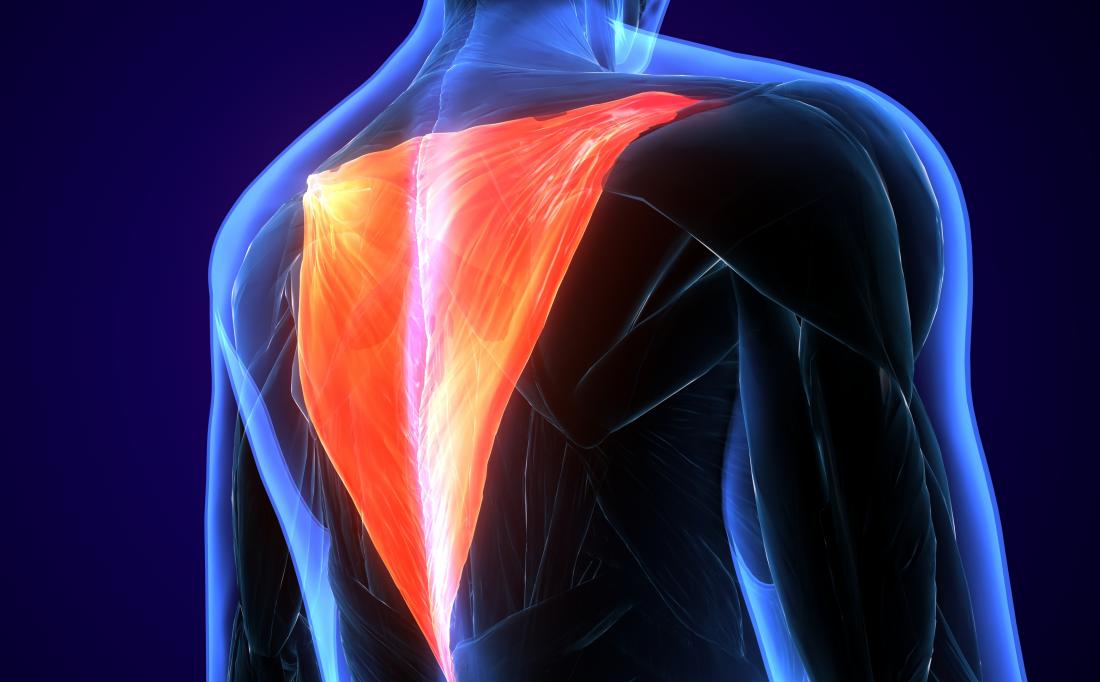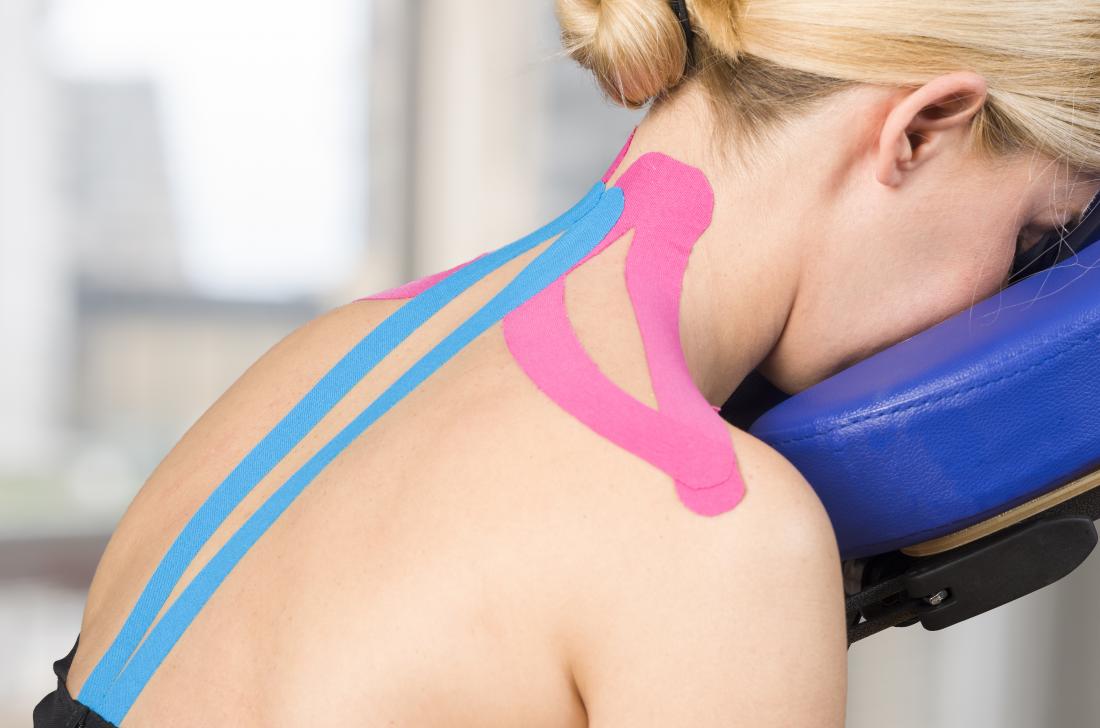Is the Trapezius a Back or Shoulder Muscle
The trapezius is one of the upper back muscles. It is a large triangular muscle that runs from the occipital bone in the skull to the thoracic spine in the back. It extends to the width of the shoulders.
The muscle separates into three sections: the superior, middle, and inferior. Each segment of the muscle plays a role in specific movements of the neck and shoulders.
In this article, learn more about the functions of the trapezius, causes of pain and soreness in this muscle, and how to relieve pain.

The trapezius muscle is part of the upper back.
The trapezius stabilizes the shoulder blades and also facilitates shoulder and neck movement.
The superior or upper segment of the muscle helps elevate the shoulder blades. The upper trapezius also helps rotate and tilt the neck.
The middle trapezius brings the shoulder blades back and also provides stabilization for the shoulder during some arm movements. The lower trapezius helps bring the shoulder blades back down.
The trapezius can become painful or sore for many reasons. Pain in the trapezius may also have accompanying symptoms, such as:
- muscle stiffness
- shoulder or neck pain
- muscle spasms
- tingling or numbness in one or both arms
- decreased range of motion in the shoulders or neck
There are several possible causes of trapezius pain, including:
- Overuse: Pain in the trapezius often develops due to overuse. Repetitive activities that involve the shoulders can put stress on the muscle. These activities may include lifting heavy objects or participating in specific sports, such as swimming.
- Stress: It is common for people to tense the muscles of the shoulder and neck when they feel stressed. This excess tension can lead to muscle soreness over time.
- Poor posture: Prolonged poor posture can place added stress on the trapezius. Hunching over a desk or computer keyboard for many hours, for example, can result in the muscle becoming shortened and tight.
- Trauma: Injuries to the trapezius, such as a muscle tear from placing too much force on the muscle, can lead to pain.
Stretching can help keep the trapezius muscle from getting too tight. It may also prevent or relieve pain.
When stretching, it is important to move in and out of the stretch gently, avoiding jerky movements and bouncing. Hold the stretch for about 15 to 30 seconds.
A stretch should cause tension but no pain, so a person should avoid forcing any stretches. Below are some trapezius stretches to try.
Cat stretch
To do the cat stretch:
- Get into position on all fours on the floor.
- Inhale and curl the spine up toward the ceiling while contracting the abdominal muscles.
- Hold the position for 15 seconds.
- Exhale and allow the belly to sink toward the floor, arching the back.
Ear-to-shoulder
To do an ear-to-shoulder stretch:
- Sit up straight in a chair.
- Slowly bend the head over to the left side as though trying to touch the ear to the shoulder.
- Place the left hand on the head and gently pull it down toward the shoulder for a deeper stretch.
- Hold the stretch for 20 seconds.
- Release the head and perform the same stretch on the right side.
Hug stretch
To do a hug stretch:
- Stand up straight.
- Reach the right arm across the chest and hold the left shoulder. Do the opposite on the other side to hold the right shoulder with the left hand.
- Press down on the left shoulder with the right hand while leaning the head to the right.
- Hold the stretch for about 20 seconds.
- Repeat on the other side.
Treatment for trapezius pain may vary depending on the underlying cause. Resting the muscle and avoiding activity that causes pain will help the muscle heal.
Additional home remedies and treatments include:
Dry needling
Dry needling is a technique that involves inserting short, fine needles into the skin at specific trigger points.
Proponents of dry needling claim that inserting the needles into trigger points releases muscle knots and may decrease pain.
A small
Applying ice and heat
Both hot and cold therapy may decrease the discomfort of muscle pain. Applying ice can help reduce inflammation and pain in the trapezius.
Heat can effectively reduce muscle spasms, increase blood flow to the area, and promote healing.
Taping
The use of kinesiology tape may also help ease trapezius pain. This technique involves applying a stretchy elastic tape over the painful area to decrease pressure on the muscle.
One small, short-term
The study found that kinesiology taping significantly reduced subjective pain sensation.
Although the study was limited, kinesiology taping is a low-risk solution that may provide some relief.
Nonsteroidal anti-inflammatory drugs (NSAIDs)
Over-the-counter (OTC) pain relievers and topical creams may help reduce trapezius pain. Popular NSAIDs include ibuprofen and naproxen.
Pregnancy and some medical conditions may prevent people from taking NSAIDs. Anyone who is unsure about taking these medications should speak with a doctor or pharmacist first.

A person experiencing ongoing pain and limited movement should visit a doctor or physical therapist.
In most cases, people can successfully treat trapezius pain using home remedies, such as rest, ice, and OTC pain medication.
However, a person should speak to a doctor if they experience any of the following:
- severe pain
- inability to move the shoulder or neck
- pain that lasts for more than a week
- signs of infection, such as skin redness and fever
- a depression (divot) or deformity in the trapezius, which can indicate a severe muscle tear
As with all muscles, the trapezius is prone to injury and soreness. There are many causes of trapezius pain, including a pulled muscle and poor posture.
Keeping the muscle pliable and loose with stretches may help prevent soreness. If trapezius pain does develop, it usually resolves without professional medical treatment.
Home remedies, such as rest, ice, and anti-inflammatory medication are often sufficient to ease the pain.
Read the article in Spanish.
Is the Trapezius a Back or Shoulder Muscle
Source: https://www.medicalnewstoday.com/articles/324251
0 Response to "Is the Trapezius a Back or Shoulder Muscle"
Post a Comment